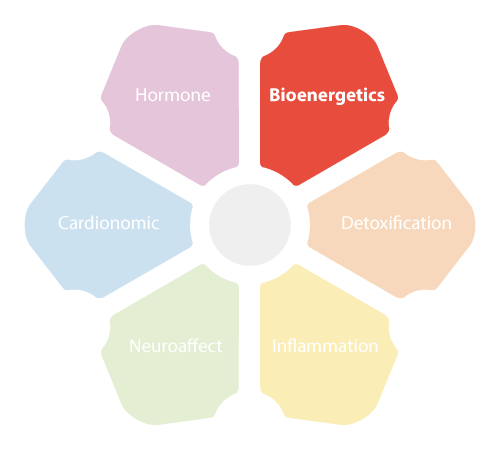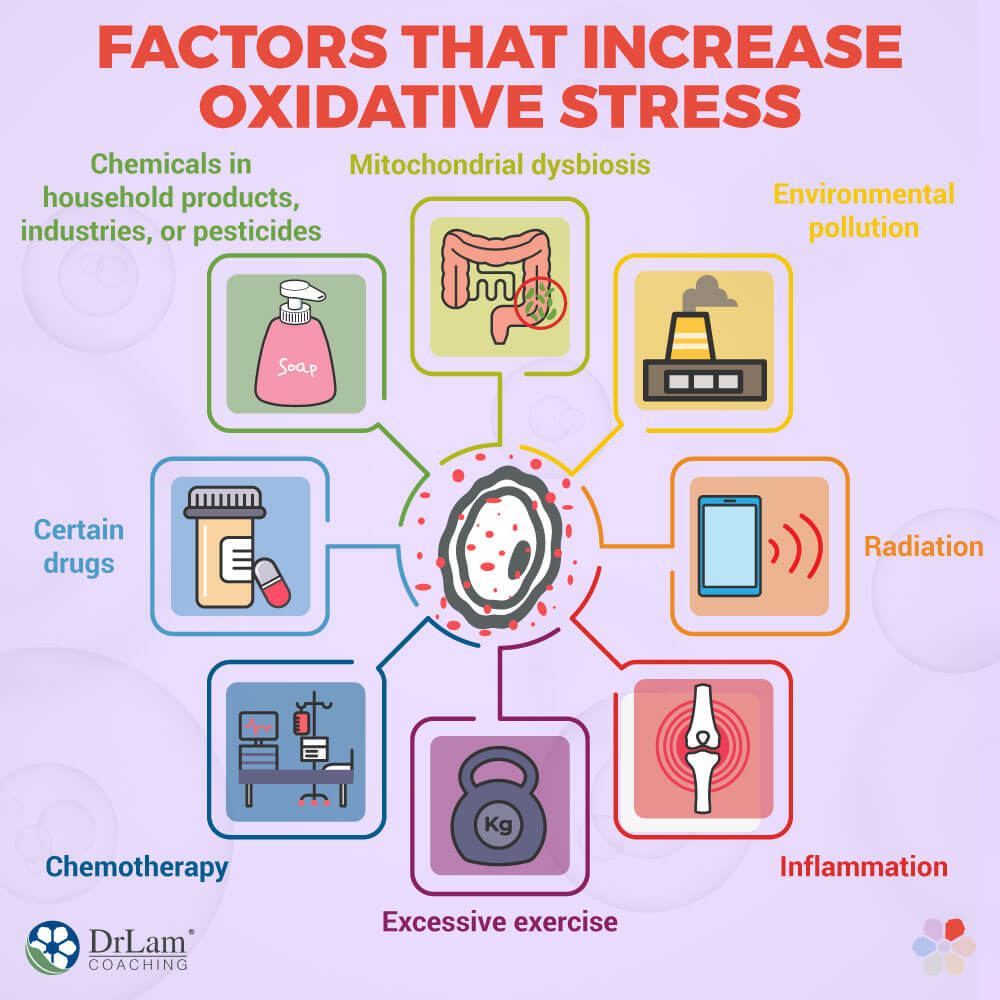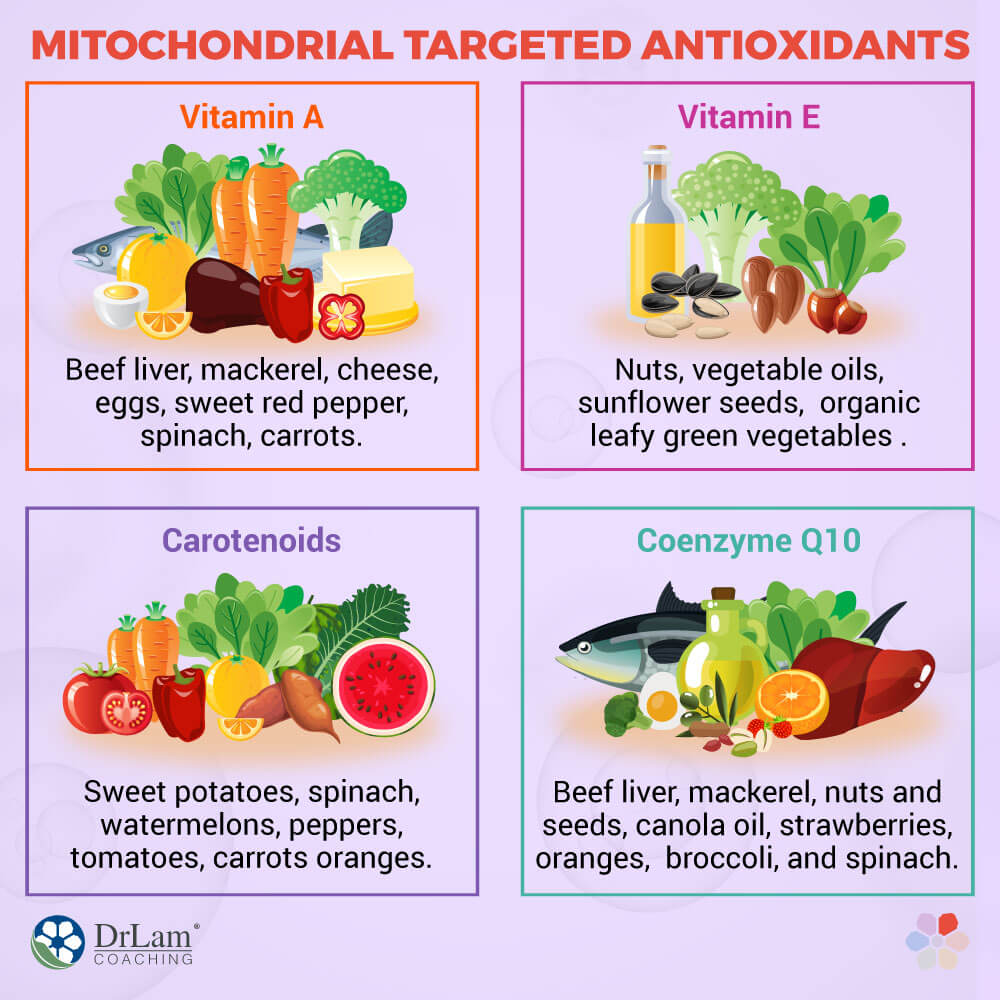Every cell in your body has a tiny powerhouse called the mitochondria. Mitochondria are responsible for turning the energy we get from our food into energy our cells can use to perform essential functions. Mitochondria also play a role in signaling between individual cells and cell death. But sometimes things go wrong within the mitochondria, making them unable to perform their tasks. This is especially the case with regards to cells in your vascular endothelium. In such incidents, according to research, mitochondrial targeted antioxidants may form part of the solution.
Before looking at the action of mitochondrial targeted antioxidants, however, one first needs to understand vascular endothelium and mitochondrial function.
 The endothelium is a layer of cells lining the inside walls of all blood vessels throughout your body. It is made up of a thin layer of endothelial cells. In total, the vascular endothelium covers a total surface of approximately 9,842 square feet, with that in the brain alone covering an area about as big as a tennis court.
The endothelium is a layer of cells lining the inside walls of all blood vessels throughout your body. It is made up of a thin layer of endothelial cells. In total, the vascular endothelium covers a total surface of approximately 9,842 square feet, with that in the brain alone covering an area about as big as a tennis court.
Because it plays such an important role in so many bodily functions, dysfunction in this layer could potentially lead to multiple health issues and complications. The main functions associated with the vascular endothelium include:
Endothelium dysfunction, however, may result in numerous health conditions such as viral infections, diabetes, chronic kidney failure, and most cardiovascular conditions, including hypertension, coronary artery disease, and chronic heart failure.
In many cases, endothelium dysfunction is due to free radicals that disrupt your body’s nitric oxide (NO) balance and damage the endothelium. This makes it overly permeable, thus allowing toxins to pass into your body tissues.
Healthy adults may have enough antioxidants readily available in their bodies to deal with these free radicals, but aging, ill health, or injuries may result in your body’s antioxidants being too few to cope with this type of scenario. If your endothelium sustains damage, and your NO levels become unbalanced, free radicals could potentially pass into your body tissues.
Factors that may contribute to the accumulation of free radicals in your body include eating foods with high sugar content, air pollution, heavy metal poisoning, smoking, microbial infections, and obesity.
According to numerous studies, the simple process of aging may have an impact on endothelial homeostasis. For example:
This may explain why advancing age is often associated with vascular dysfunction and the accompanying heart health challenges faced by so many older adults.
Your mitochondria produce adenosine triphosphate (ATP). ATP powers your body’s metabolic processes and is produced by means of the Krebs cycle. The Krebs cycle is also known as the citric acid cycle. This cycle also produces nicotinamide adenine dinucleotide (NADH) which is used in ATP production.
Mitochondria make up approximately five percent of your smooth muscle cell volume. Smooth muscle cells are found in the walls of your hollow organs like your stomach, intestines, or bladder, for example. Their main function has to do with the process of elimination, such as contracting in order for you to expel urine. You may not even be aware that these muscles are working, as they have an automatic function.
In addition, mitochondria compromise between two and four percent of the volume of endothelial cells, the cells lining your blood vessels. Here, mitochondria play a very important role in energy production for vascular cell secretion and maintaining vascular tone.
Another aspect of mitochondria is its role in redox homeostasis. Redox refers to the oxidation and reduction of cells in order to keep a certain balance. In other words, it plays a part in the formation of new cells, the health of cells, and the death of cells. Cell death, or apoptosis, is due to the release of cytochrome C which activates caspase. Caspase is one of the main enzymes involved in cell destruction.
Mitochondrial dysfunction, as well as the various disorders related to it, may be linked to issues in energy production. Many times, these various disorders may be very vague and assessment difficult. At times, the symptoms associated with mitochondrial dysfunction may mimic other health issues such as adrenal fatigue, interstitium congestion, or a sluggish liver.
As mentioned, ATP production takes place in your mitochondria and provides your body with energy. A dysfunctional mitochondrial cell may no longer produce ATP. It may, however, become a storage place for excess fuel and oxygen molecules as well as lactic acid. The latter may result in fatigue, muscle aches, and cramps and the cell itself may die. If this happens in too many cells, homeostasis is compromised, and the aging process is accelerated.
The body systems that may be most affected by mitochondrial dysfunction include the endocrine system, respiratory system, heart, brain, liver, kidneys, and skeletal muscles. Common symptoms associated with mitochondrial dysfunction include:
Besides the functions already mentioned, mitochondria also play a role in:
Various studies have shown that mitochondrial numbers may decrease with age. These studies indicate that as one ages, a decrease in mitochondrial biogenesis in endothelial cells, or a decrease in mitochondrial production and function, often occurs. This could result in the development of various health issues such as heart conditions.
Although mitochondrial numbers may decrease with advanced age, studies indicate that exercise training may increase your vascular mitochondrial respiratory capacity. Respiratory capacity refers to the increasing ATP production in relation to an increase in energy demand. This reserve capacity may decline with age. Exercise may also increase your redox balance, or the balance between new, current, and dying cells. These changes seem to correlate with elevated levels of arterial nitric oxide. The presence of nitric oxide influences your blood nutrient composition as well as your body’s energy flow. Nitric oxide plays a very important role in mitochondrial activity.
By improving your vascular mitochondrial function, you may potentially protect yourself against various health conditions that are commonly thought of as age-related. Many of these health conditions may also be related to other issues, however, such as obesity or compromised immunity.
By addressing your mitochondrial needs, you may thus make major inroads as to your current and future health. Vascular health and accompanying health issues like heart disease are major players in current health issues facing the western world, and they are also major causes of death.
Your mitochondria play a very important role in adrenal health. This is because it starts the process of adrenal hormone synthesizing by converting cholesterol in the precursor hormone pregnenolone. Pregnenolone is the precursor hormone to the stress hormone cortisol, DHEA, progesterone, testosterone, and estrogen. The production of these hormones is initiated by cytochrome P450 which is found on a mitochondrion’s inner membrane.
 When dysbiosis occurs in your mitochondria, your hypothalamic-pituitary-adrenal (HPA) axis may be compromised, as compromised mitochondria may adversely affect your brain’s chemical messaging system. If this is the case, it means that your body’s NeuroEndoMetabolic (NEM) Stress Response is also affected. When these two components are both compromised, adrenal health may decline, resulting in a cascading series of events in various parts of the body with numerous symptoms that may not seem related. One organ that may be affected, and which is vital for mitochondrial health, is the thyroid.
When dysbiosis occurs in your mitochondria, your hypothalamic-pituitary-adrenal (HPA) axis may be compromised, as compromised mitochondria may adversely affect your brain’s chemical messaging system. If this is the case, it means that your body’s NeuroEndoMetabolic (NEM) Stress Response is also affected. When these two components are both compromised, adrenal health may decline, resulting in a cascading series of events in various parts of the body with numerous symptoms that may not seem related. One organ that may be affected, and which is vital for mitochondrial health, is the thyroid.
In order for your mitochondria to function correctly, thyroid health is essential. This is because thyroid hormones stimulate cell respiration and mitochondrial biogenesis. Thyroid hormones also play a role in the uncoupling of the oxidative phosphorylation process. This is essential for the formulation of ATP and uses proteins and lipids found in mitochondria. When this uncoupling process increases, the effect of thyroid hormones is enhanced. T3, one of the thyroid hormones, plays a role in mitochondrial function regulation for the heart, liver, kidneys, and skeletal muscles.
Another important role played by thyroid hormones is energy transformation due to oxidation into a form that cells are able to use. Hypothyroidism is associated with mitochondria that respire at a slower-than-normal rate, resulting in a slower use of oxygen. On the other hand, hyperthyroidism sees mitochondria function that is speeded up, with a quicker respiration function and oxygen use.
Hyperthyroidism is also associated with tissue damage as a result of oxidative injury. This, in turn, may compromise your mitochondria, as research indicates that healthy thyroid hormones play a protective role with regards to mitochondria. Research also indicates that thyroid hormones may play a role in mitochondria production and improve their ability to use oxygen.
Thyroid issues may be connected to adrenal health. At the same time, thyroid hormones are related to ATP production which, in turn, is related to cardiac function, platelet function, liver function, and the function of your neurotransmitters. This suggests that adrenal function is closely connected to mitochondrial function.
One of the solutions suggested for aging and the subsequent decline in mitochondrial health and numbers may be mitochondrial targeted antioxidants. These are antioxidants that specifically target, support, and help increase mitochondrial health and function.
Before looking at mitochondrial targeted antioxidants, however, we first need to understand the role played by antioxidants in our continued wellbeing.
 Antioxidants may help prevent or slow down the damage caused by free radicals at a cellular level. Typically they are of two types: endogenous antioxidants and exogenous antioxidants. The former is manufactured by your own body, while the latter is found from outside sources such as the food we eat. The main function of antioxidants is to help neutralize free radicals and thus maintain your health.
Antioxidants may help prevent or slow down the damage caused by free radicals at a cellular level. Typically they are of two types: endogenous antioxidants and exogenous antioxidants. The former is manufactured by your own body, while the latter is found from outside sources such as the food we eat. The main function of antioxidants is to help neutralize free radicals and thus maintain your health.
Other benefits associated with antioxidants include:
Free radicals, on the other hand, are usually regarded as cellular waste products resulting from food processing and environmental reactions. In effect, free radicals, which are also referred to as reactive oxygen species (ROS), are unstable, electrically charged molecules found in your cells that react with other molecules and cause damage.
Once a free radical is formed, an antioxidant molecule neutralizes it by passing over an electron. While antioxidants may work at a cellular level, certain antioxidants work with and support mitochondrial function. Those that actively work towards preserving mitochondrial integrity are referred to as mitochondrial targeted antioxidants.
The increase of free radicals in your body may be due to internal or external factors. Inflammation is an example of an internal factor. External factors may include exposure to pollution, insecticides used on plants, and chemicals used for cleaning your home. When there is an imbalance between the free radicals and antioxidants in your body, oxidative stress occurs, with your mitochondria suffering in the process. Oxidative stress is also a contributing factor in adrenal fatigue.
Oxidative stress has been linked to numerous health conditions such as inflammatory conditions, ischemia (insufficient blood supply to various parts of the body including the heart), cancer, stroke, arthritis, and others.
Factors that could induce oxidative stress include:
An increase in free radicals and oxidative stress may also be due to the aging process. Health conditions that are associated with a free radical excess in the body include asthma, diabetes, cancer, atherosclerosis, degenerative eye disease, inflammatory joint disease, and senile dementia. Antioxidant activity is the best course of defense against these and many other health conditions associated with free radical activity in the body.
But when it comes to free radicals, it is not all bad. They carry out certain vital functions essential for survival. Free radicals are used by your body’s immune cells in its efforts to fight off infectious bacteria, and they may also play a role in heart muscle stimulation during times of stress. This allows your heart to beat faster in an effort to ensure enough oxygen reaches all vital bodily components needed for the body’s “fight or flight” response. Of course, if you’re in the latter stages of adrenal fatigue, this scenario could potentially carry on indefinitely, resulting in damage to the cardiovascular system in the long run.
When it comes to your antioxidant to free radicals ratio, it would seem balance is key to optimal health. It is only when this balance is disrupted that your body is negatively impacted.

Besides endogenous and exogenous antioxidants, antioxidants could also be classified as either fat-soluble (hydrophobic) or water-soluble (hydrophilic). According to research, fat-soluble mitochondrial targeted antioxidants may be more effective at targeting mitochondrial health.
Generally speaking, free radicals either attack a cell’s fluid content or the fatty cellular membrane. Hydrophilic antioxidants are those found in your body fluids such as your blood or the fluid found in and around your cells. Examples of hydrophilic antioxidants include glutathione and vitamin C, amongst many others.
Hydrophobic antioxidants, on the other hand, protect your cell membranes. They are also beneficial for mitochondrial activities. In essence, hydrophobic antioxidants are mitochondrial targeted antioxidants due to their ability to benefit your mitochondria in the work they carry out.
But how do hydrophobic antioxidants reach the mitochondria?
The fluid inside a cell has a negative charge. But the mitochondria’s charge is at a lower charge than the surrounding cell fluid. Mitochondrial targeted antioxidants move through the cell membrane and reach the mitochondria, which has a lower charge. This they do by means of attaching themselves to cations.
Cations are positively charged molecules that attach themselves to certain antioxidants. In so doing, they are able to pass through all your bodily membranes, including the blood-brain barrier, into muscle cells, and to the mitochondria in cells. In this way, mitochondria are protected against oxidative damage due to free radicals.
Examples of mitochondrial targeted antioxidants include vitamin A, vitamin E, carotenoids, and coenzyme Q10.
Sources of naturally occurring mitochondrial targeted antioxidants include the following:


Like most antioxidants, mitochondrial targeted antioxidants may often also be found in supplemental form. While taking supplements may not be bad for your health, overdosing may occur. For this reason, it is usually better to first consult a qualified healthcare professional before deciding on a supplement regimen.
Various mitochondrial targeted antioxidants, if taken in excess, may result in a list of symptoms that could be ascribed to other causes and not to overuse of these antioxidant supplements.
Excess vitamin A may result in hair loss, headaches, problems with vision, pains in your joints and bones, nausea, dry skin, jaundice, and liver damage.
Too much vitamin E in your body may result in blurred vision, fatigue, nausea, and issues with the gonads. It is also a mild blood thinner, and its use in a supplement is usually discouraged in the event of surgery.
 While supplements containing coenzyme Q10 are generally considered safe, there are instances where one should think twice about using this supplement. As one of the mitochondrial targeted antioxidants, coenzyme Q10 may lower blood pressure and may thus increase the effects of any medications used for hypertension. It may also interfere with blood pressure control both before and after surgery and interfere with certain drugs used during chemotherapy.
While supplements containing coenzyme Q10 are generally considered safe, there are instances where one should think twice about using this supplement. As one of the mitochondrial targeted antioxidants, coenzyme Q10 may lower blood pressure and may thus increase the effects of any medications used for hypertension. It may also interfere with blood pressure control both before and after surgery and interfere with certain drugs used during chemotherapy.
Studies on the action of mitochondrial targeted antioxidants are, so far, to a large extent inconclusive. There is one exception, however.
Coenzyme Q10, which is also known as ubiquinone, once in the body is converted into its active form known as ubiquinol. Research into the properties associated with this antioxidant led to the creation of a super form of ubiquinol known as mitoquinol which may have a stronger effect on mitochondrial health.
Studies indicate a large body of support that mitochondrial targeted antioxidants may play an active role in protection against aging and age-related health conditions.
A study on vascular function showed an improvement in aortic stiffness after the administration of mitochondrial targeted antioxidants.
For age-related endothelial dysfunction, results were promising when participants supplemented with mitochondrial targeted antioxidants. Both respiratory function and vasodilatory response were improved.
Studies on hypertension and supplementation with mitochondrial targeted antioxidants showed an improvement in vascular function in both younger and older adults.
For peripheral artery disorder (PAD), results were also promising. This disorder sees the progressive narrowing and occlusion of arteries in the lower extremities, and it is characterized by a buildup of plaque in the lower arteries. This results in reduced blood flow to the legs, meaning less oxygen is transferred to this area. Pain often occurs because less oxygen is available for transfer to the skeletal muscles. It is estimated that between twelve and twenty percent of adults over sixty have PAD. Mitochondrial targeted antioxidants may be of benefit because those with PAD have more oxidative damage to their mitochondria than their healthy counterparts of the same age.
Another possible application for mitochondrial targeted antioxidants may be in the prevention of heart failure.
It is believed that approximately 57 million Americans have heart failure. Animal studies on mitochondrial targeted antioxidants have been promising thus far. They strongly indicate that administering higher dosages of these antioxidants may decrease instances of cardiac ischemia, where the blood supply to the heart muscles is insufficient. In some cases, there was a notable improvement in mitochondrial structure and function.
Mitochondrial targeted antioxidants may also help combat fatigue and improve joint, kidney, muscle, liver, and brain function.
Aging is a normal process. Yet certain conditions could speed up this process. These conditions could be due to internal factors or environmental factors, and this process may result in a variety of health conditions that may be debilitating, such as heart attacks, dementia, and liver disease, to name a few.
Conventional medicine has, over the years, targeted these different health conditions, yet their root cause may lie in our cells -- our mitochondria. And the agent of these conditions may be an imbalance between the free radicals and antioxidants in our bodies.
There is a large body of evidence suggesting that mitochondrial targeted antioxidants could positively affect mitochondrial and thus cellular health. The use of mitochondrial targeted antioxidants, according to research, may reduce the impact of free radicals. They may also halt further mitochondrial degeneration and, in certain instances, even improve mitochondrial function.
 This means that aging, to a large extent, could be addressed at a cellular level.
This means that aging, to a large extent, could be addressed at a cellular level.
Although we are constantly bombarded by free radicals, whether due to the aging process or due to environmental factors, upping our intake of mitochondrial targeted antioxidants from the food we eat or supplements could, potentially, give our mitochondria the boost and protection they need to help with the healing process.
However, if you are suffering from adrenal fatigue, we do not recommend taking antioxidant supplements without the guidance of an adrenal fatigue specialist or a healthcare provider. Sometimes, taking antioxidants may worsen your condition and put you further into adrenal fatigue. Find a provider who understands where your body is and can put you on the right path to recovery before starting antioxidants on your own. It is important to start your recovery process right. The team at Dr. Lam Coaching team. We can offer you a free** no-obligation phone consultation at +1 (626) 571-1234 where we will privately discuss your symptoms and what your options are. You can also send us a question through our Ask The Doctor system by clicking here.
According to a large body of research, mitochondrial targeted antioxidants may have many applications related to the aging process. One of these is heart disease, which, to a large extent, has proved positive. These antioxidants have been shown to improve mitochondrial activity relating to many conditions affecting heart health.
